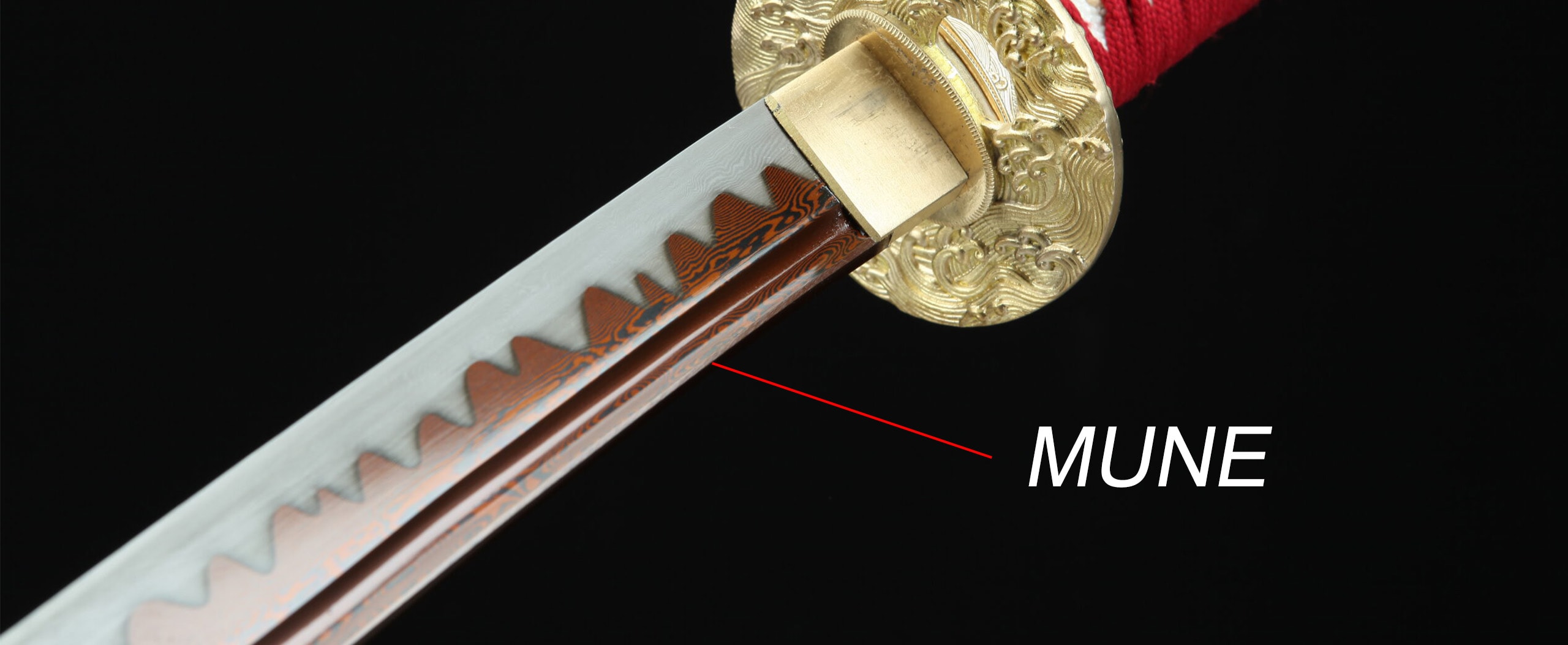The mune is the back or spine of the blade of a katana or other Japanese sword. It runs along the centerline of the blade, opposite the cutting edge (ha), and is usually thicker and wider than the ha.
Mune function:
The mune serves several important functions in the construction and use of a katana. It contributes to the balance and stability of the sword, as well as to the absorption of shocks and vibrations during use. The thickness and shape of the mune can also affect the sword’s handling characteristics, such as its weight and balance point.
Symbolism of the Mune :
The mune can also have aesthetic and symbolic significance. It is often decorated with various types of filings or grooves, called hi, which can enhance the appearance of the sword and also serve to lighten the blade and improve its balance. The mune may also bear the name of the smith or other inscriptions significant to the owner of the sword.
In addition to its functional and aesthetic role, the mune may also have symbolic significance in Japanese culture. It is sometimes called the “backbone of the soul” and is believed to represent the strength and resilience of the swordsman’s character. The mune is also considered a sacred part of the sword and is often treated with great reverence and respect.
The different types of Mune :

Iribi : This is a straight mune that runs the full length of the blade. This is the simplest type of mune and is often found on older katanas.
Shinogi : It is a ridge that runs the length of the blade, separating the blade into two halves: the shinogi-ji (blade surface) and the mune-ji (back surface). This type of mune is commonly found on modern katanas.
Hira : This is a flat mune that runs the length of the blade. It is usually found on the thinner blades and was often used for slicing and cutting.
Ito-sukashi : It is a mune perforated or engraved with a pattern. It was used to lighten the blade and give it an aesthetic value.
Kaku-maru : This is a square shaped mune with rounded edges. It is often found on blades that were designed to cut rather than push.
Ito-maru : It is a round mune similar to kaku-maru, but without the square shape. It is usually found on older blades.
Mitsu-mune : It is a mune that has three ridges, creating a triangular shape. It was used to make the blade stronger and more rigid.
Each type of mune can affect the weight, balance and strength of the katana, as well as its overall appearance.

